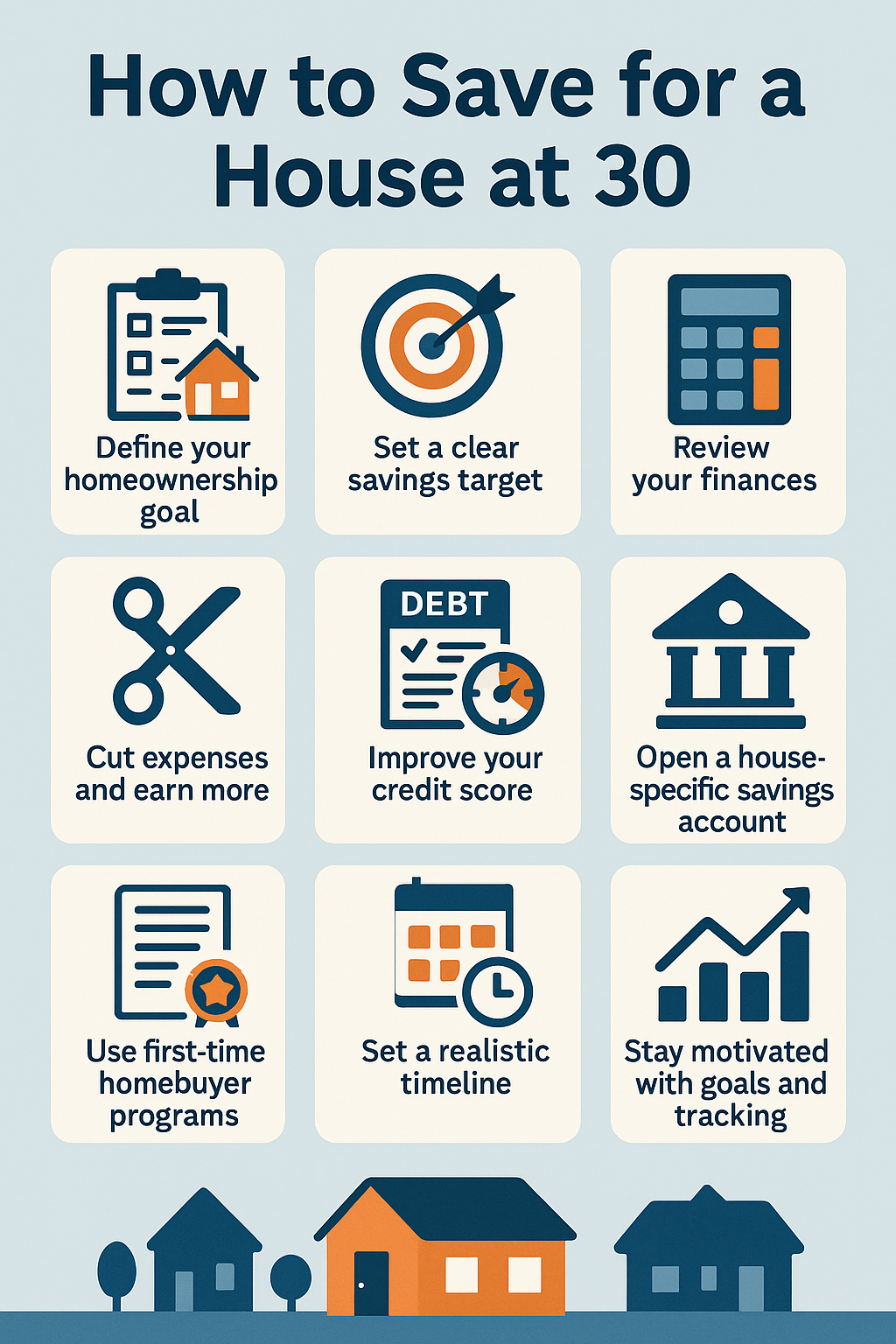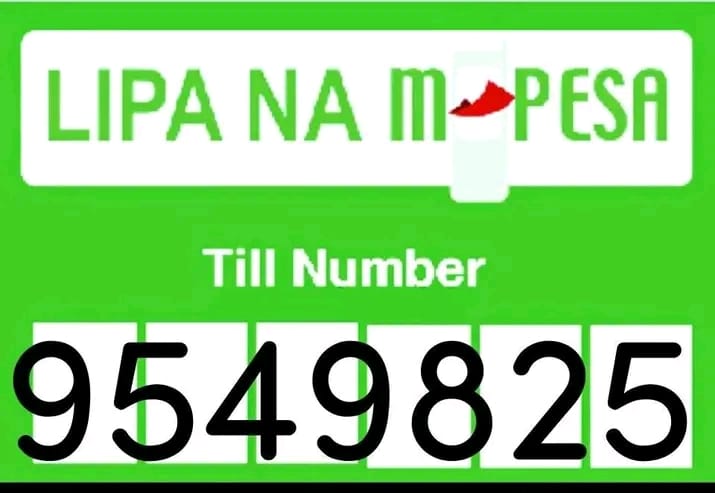
simply amazing, always for you.
By age 30, you’ve likely crossed a few financial milestones. Maybe you’ve paid off some student debt, built a stable income stream, or learned how to manage your monthly bills without breaking into a cold sweat. This is the decade where many people begin thinking more seriously about their long-term goals—and for most, buying a house ranks near the top.

But knowing you want to buy a home and knowing how to make it happen are two very different things. Whether you’re starting from zero or you’ve been setting some money aside already, this guide is designed to walk you through exactly how to save for a house in your 30s—step by step.
We’ll cover everything from understanding your financial starting point to building a practical savings plan that actually works, while also navigating credit, mortgages, and down payments like a pro.
Let’s get started.
Why Buying a House at 30 Makes Sense
First, let’s talk about the “why.” Why does it even make sense to pursue homeownership in your 30s?
1. You’re in a stable phase of life. Most people by 30 have more clarity on where they want to live, what kind of lifestyle they want, and whether they plan to start a family. That makes buying a house more strategic than in your early 20s, when life changes more rapidly.
2. You have earning potential. Your income at 30 is usually stronger than in your early career years. That means you can allocate more toward savings, qualify for better loan terms, and invest in a property that appreciates over time.
3. You gain financial leverage. A home isn’t just a place to live—it’s also an asset that can grow in value, be used for tax deductions, and eventually serve as leverage for other investments.
Still, you need a plan. Let’s build it.

Step 1: Define Your Homeownership Goals
You can’t save for a house if you don’t know what kind of house you want to buy—or how much it’s likely to cost.
Ask yourself:
- Do you want a condo, a townhouse, or a single-family home?
- Are you looking to live in a city, the suburbs, or a rural area?
- What features matter most—backyard, garage, multiple bedrooms?
Get specific. Look up real listings in neighborhoods you like and get a feel for the actual prices. You’ll likely discover that your dream home may cost more—or less—than you expected.
Step 2: Know Your Target Number
Once you know the general price range for the homes you’re interested in, the next step is setting a concrete savings goal. This includes the down payment and a few other often-overlooked costs.
The Down Payment
This is the most talked-about part of home buying. Traditionally, 20% has been considered the gold standard because it helps you avoid paying private mortgage insurance (PMI). However, many lenders accept much less, especially for first-time buyers. Depending on your loan type:
- Conventional loan: 5% to 20%
- FHA loan: As low as 3.5%
- VA or USDA loan: May require zero down if eligible
Let’s say you’re targeting a $300,000 home:
- 20% down = $60,000
- 10% down = $30,000
- 5% down = $15,000
Set your goal based on what makes the most sense for your finances and risk tolerance.
Other Costs
Your down payment isn’t the only thing you’ll need to cover. Plan for:
- Closing costs: Typically 2% to 5% of the home price
- Home inspections and appraisals
- Moving expenses
- Initial repairs or upgrades
- Emergency fund: You don’t want to empty your savings completely just to get the keys
Step 3: Assess Your Financial Situation
Now it’s time to get honest about where you stand today.
Income
- What’s your total take-home pay each month?
- Do you have side gigs, bonuses, or other income?
Expenses
- List every recurring bill—rent, car payments, subscriptions, groceries
- Track your discretionary spending—dining out, entertainment, shopping
Debts
- What do you owe on credit cards, student loans, car loans?
- What are the interest rates and minimum payments?
Understanding your financial baseline will help you see how much you can realistically save every month toward your house fund.
Step 4: Create a Monthly Budget That Works
With your numbers in hand, you can now build a budget that prioritizes homeownership without making your life miserable.
Use the 50/30/20 Rule (Or Better)
This is a simple framework:
- 50% for needs (rent, utilities, groceries)
- 30% for wants (entertainment, dining out)
- 20% for savings or debt repayment
If you want to speed up your house savings, shift more into the savings category—maybe aim for 25% to 30% if your income allows.
You don’t have to use this method rigidly. The key is to consistently set aside money every month specifically for your home fund.
Step 5: Open a Separate House Savings Account
One of the best things you can do is to create separation between your everyday money and your savings goals.
Choose the Right Account
- High-Yield Savings Account (HYSA): Earns more interest than regular accounts and offers liquidity
- Money Market Account: Similar benefits with slightly higher minimums
- Certificates of Deposit (CDs): Can work if you know you won’t need the money for a set period (e.g., 12 or 24 months)
Automate Your Deposits
Treat your house fund like a recurring bill. Set up automatic transfers to this account right after each payday. You’ll build savings consistently without having to think about it.
Step 6: Cut Costs and Increase Savings
You can only save more by either earning more or spending less—or ideally, both.
Reduce Existing Expenses
- Cancel unused streaming or subscription services
- Cook more meals at home
- Limit online shopping
- Negotiate bills or insurance rates
Find or Grow Side Hustles
- Freelance work (writing, design, consulting)
- Gig economy jobs (Uber, DoorDash, TaskRabbit)
- Sell items you no longer need
- Offer local services like tutoring, pet sitting, or yard work
Every extra dollar can go straight into your home fund. It adds up faster than you think.
Step 7: Tackle Your Debts
If you have high-interest debt, especially credit cards, it’s wise to deal with those before committing too heavily to homeownership.
Why It Matters
- Lowers your debt-to-income ratio (which lenders use to approve mortgages)
- Improves your credit score
- Frees up cash flow for saving
Two Proven Strategies
- Avalanche method: Pay off debts with the highest interest rates first
- Snowball method: Pay off the smallest balances first for motivation
Both work. Choose the one you’re more likely to stick with.
Step 8: Improve Your Credit Score
Your credit score has a direct impact on the kind of mortgage terms you can get. A higher score usually means a lower interest rate—which can save you tens of thousands of dollars over the life of your loan.
Ways to Boost Your Score
- Pay all bills on time, every time
- Keep credit card balances below 30% of your limits
- Don’t open unnecessary new lines of credit
- Check your credit report for errors at AnnualCreditReport.com
Even a 20- to 50-point jump can make a noticeable difference in your mortgage approval odds and rates.
Step 9: Learn About Your Mortgage Options
Before you apply, understand the types of loans available.
Main Types
- Conventional loan: Requires stronger credit, lower debt, and usually 5–20% down
- FHA loan: More lenient credit requirements; 3.5% down
- VA loan: For military service members and veterans; 0% down
- USDA loan: For rural areas; also offers 0% down
Pre-Approval
Once you’re within 6–12 months of buying, start shopping around for mortgage pre-approvals. This helps you:
- Understand how much you can borrow
- Identify areas to improve financially
- Lock in competitive interest rates
Step 10: Look Into First-Time Buyer Programs
You may qualify for local or state programs that offer:
- Down payment assistance
- Lower interest rates
- Reduced closing costs
Search through:
- State housing finance agencies
- HUD-approved counseling services
- Local banks and credit unions
These programs can dramatically reduce how much you need to save upfront.
Step 11: Plan Your Timeline
Let’s say you need $40,000 for your down payment and related costs. If you save:
- $1,000/month: You’ll hit your goal in 40 months (just over 3 years)
- $1,500/month: 27 months (just over 2 years)
- $2,000/month: 20 months (under 2 years)
Having a timeline keeps you accountable. You can adjust your savings rate, move up your goal, or plan for other expenses accordingly.
Step 12: Keep Investing, Too
Don’t pause your retirement contributions while saving for a house. In your 30s, compound interest is still your best friend.
Even small contributions to a Roth IRA or 401(k) now will grow significantly by the time you hit retirement.
Balance is key: allocate a reasonable percentage of your monthly income to both short-term (house) and long-term (retirement) goals.
Step 13: Stay Motivated Along the Way
Saving tens of thousands of dollars isn’t easy. There will be setbacks, temptations, and maybe even some burnout.
Stay Focused by:
- Using visual trackers or digital apps to measure progress
- Setting mini-goals (every $5K is a win)
- Reminding yourself why you want this
- Rewarding milestones with simple, non-expensive celebrations
Homeownership is Within Reach
At 30, you’re in a powerful position. You’re young enough to plan for the future and old enough to take meaningful action. Saving for a house may feel like a giant mountain, but it’s really just a series of small steps taken consistently over time.
You don’t need to do everything perfectly. You just need to do enough of the right things, often enough, to gain momentum.
Define your goal, build your savings plan, stay out of unnecessary debt, and keep your eye on the prize. With discipline and clarity, your dream of owning a home is not just possible—it’s inevitable.

Support Our Website!
We appreciate your visit and hope you find our content valuable. If you’d like to support us further, please consider contributing through the TILL NUMBER: 9549825. Your support helps us keep delivering great content!
If you’d like to support Nabado from outside Kenya, we invite you to send your contributions through trusted third-party services such as Remitly, SendWave, or WorldRemit. These platforms are reliable and convenient for international money transfers.
Please use the following details when sending your support:
Phone Number: +254701838999
Recipient Name: Peterson Getuma Okemwa
We sincerely appreciate your generosity and support. Thank you for being part of this journey!
